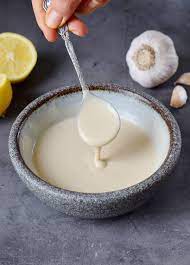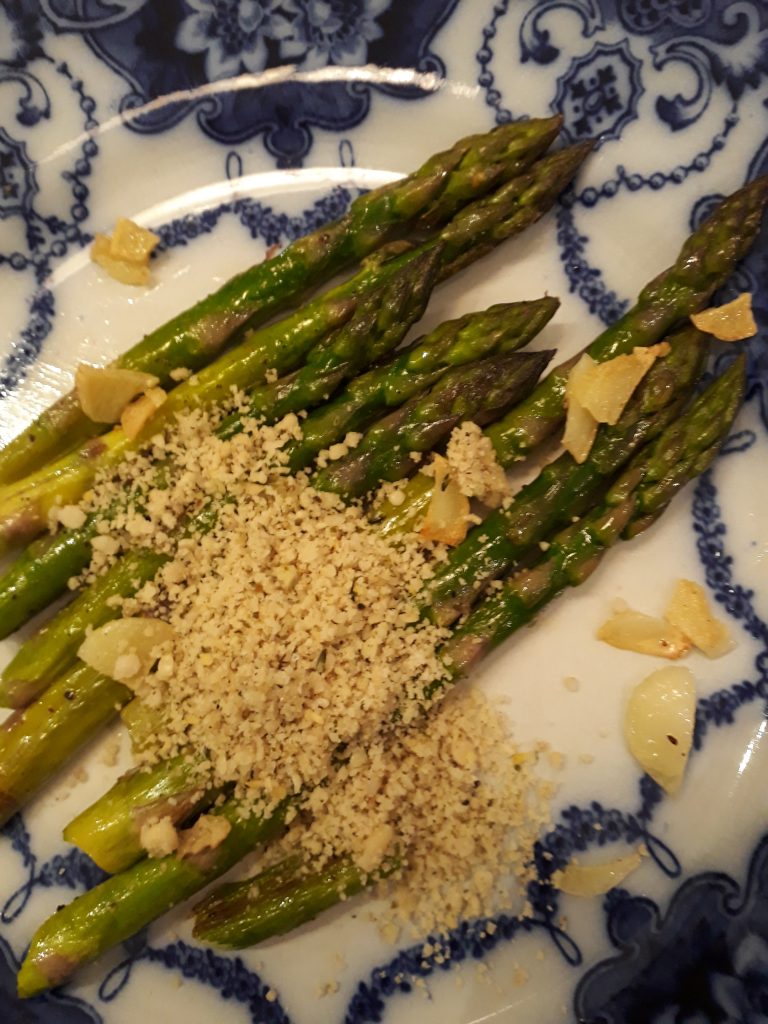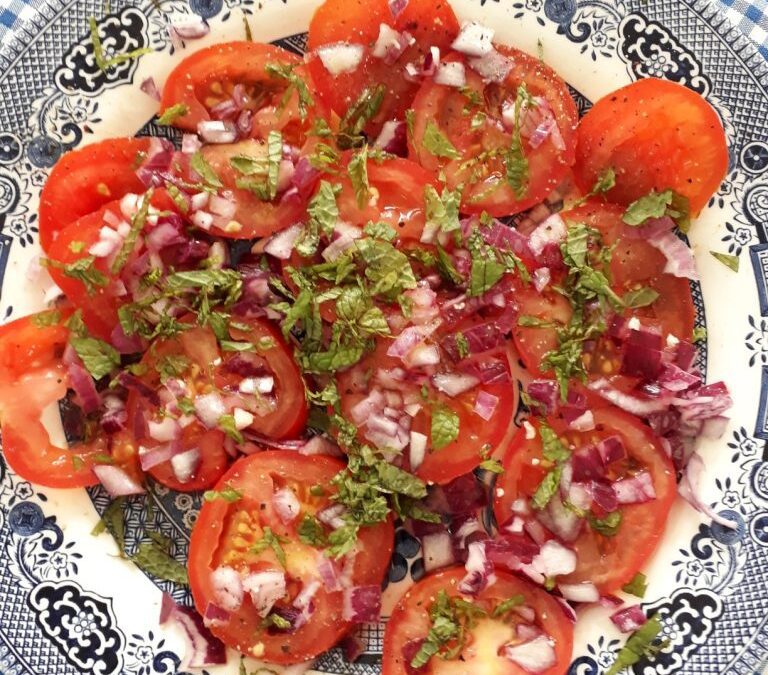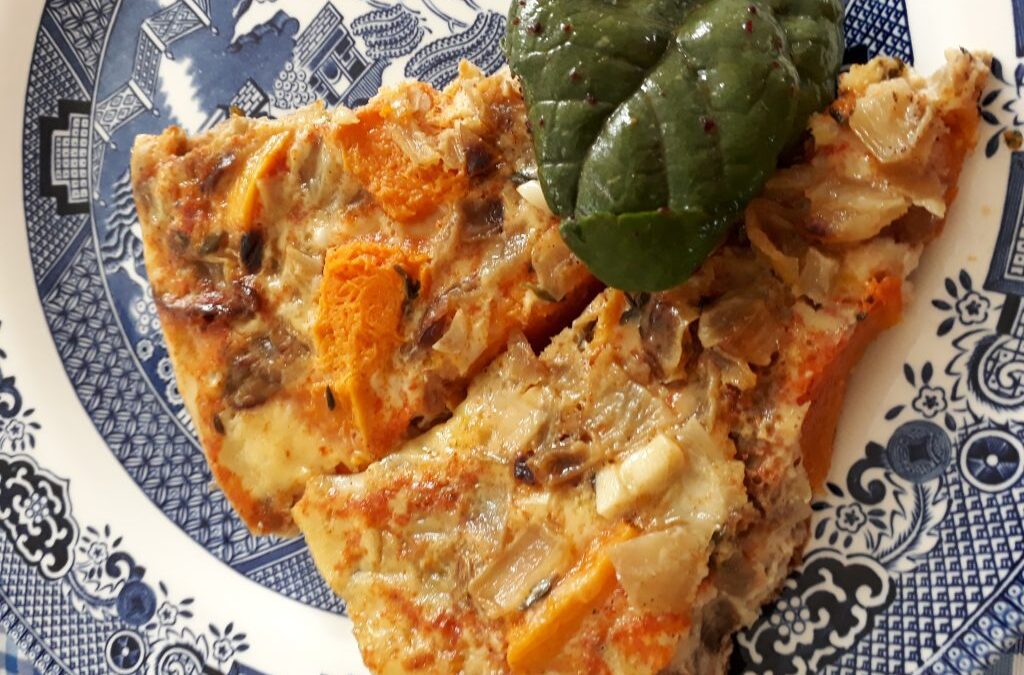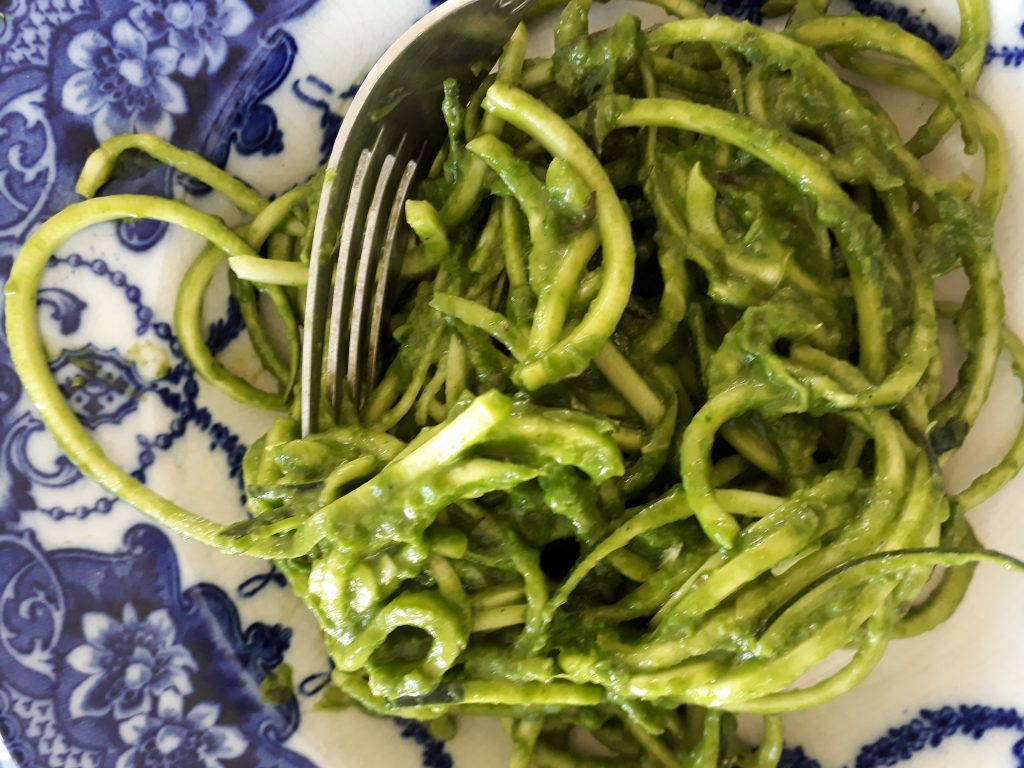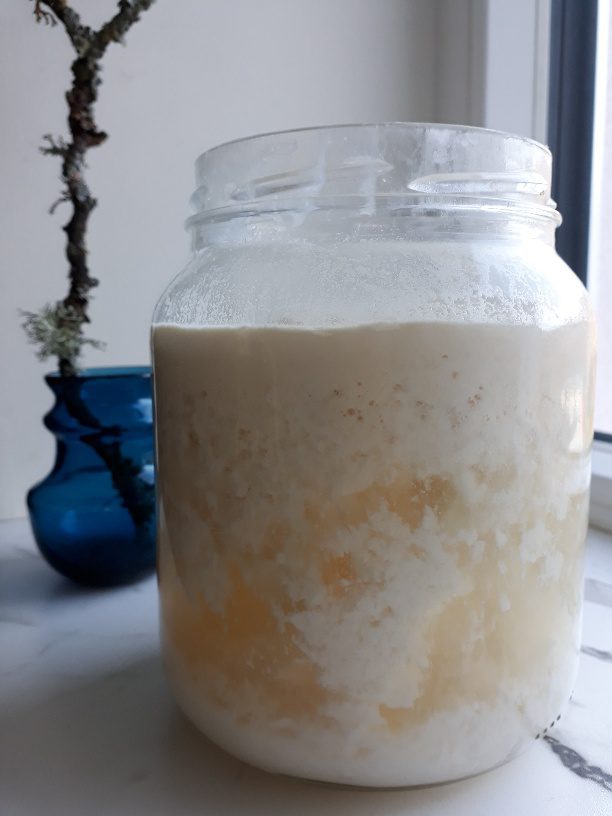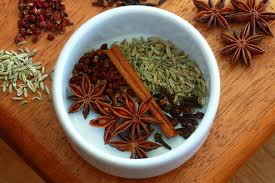
Oct 22, 2021 | Anna's Best Recipes, Dressings, rubs, spreads, sauces & more
This is gorgeous Middle Eastern style dressing – creamy, tangy and moreish. Drizzle it over a salad or grilled/roast fish or chicken. If you want you can use a little less water or kefir to make this thicker and use as a dip.
1 rounded tbs light tahini (raw brand if possible, e.g. Carly’s)
1-2 cloves garlic, crushed
2 tbs lemon juice + 125ml cold water OR (instead of lemon + water) 150ml home made kefir
5 tbs extra virgin olive oil
Generous pinch Himalayan/sea salt
Flavour + health boosters: 1/2 tsp ground spice: sweet paprika, cumin or coriander.
In a mini food processor blend all the ingredients till blended. If you are doing this by hand get a decent size bowl, add the garlic and tahini and mix in just 1/4 of the liquid at a time. You are aiming for a consistency about the texture of double cream. You may need to add more water as you go to achieve this. The tahini will clump initially. Just keep mixing, and adding more liquid if needed.
Why this is good for you:
Garlic and lemon are fantastic supporters of detoxification, a critical function for all aspects of your health. Extra virgin olive oil keeps you fuller longer and aids weight loss (yes that IS correct) and is also rich in gut-helping immune-regulating vitamin E and polyphenols. Kefir is tolerated by most dairy-sensitive people because its a pre-digested food. The friendly bugs that manufacture kefir from milk break down the dairy sugar (lactose) and dairy protein (casein) that are the main trigger for dairy sensitivity reactions. Tahini, if its raw, is a good source of healthy omega 6 oils. Omega 6 is found in all raw nuts/seeds.

Oct 3, 2021 | Anna's Best Recipes, Sides, starters, soups & snacks
I love this and I’ve made it so many times now I don’t need a recipe. Make it as cauliflower “steaks” or florets (a bit faster).
If you prefer an Indian vibe use a spice blend of 1 level tsp each of ground cumin, coriander and turmeric alongside the pepper and salt.
1 whole cauliflower, green leaves removed
1 heaped tsp ground sumac or sweet paprika
Freshly ground black pepper
Pink (Himalayan) salt
Extra virgin olive oil (about 2-3 tbs)
Roast cauliflower “steaks”
Preheat oven to 215c/200C fan
With the cauliflower standing on its stalk, slice it downwards into 1.5-2cm slices. You’ll get 4-5 good “steaks” and some shards.
Brush the roasting tin with extra virgin olive oil lay the cauliflower slices on top rubbing them around a bit to coat with the oil without breaking them up.
Brush the tops with olive oil, sprinkle with the sumac/paprika, lots of freshly ground black pepper and a generous pinch of salt.
Roast 15-20 mins at 200C. It’s done when the edges are starting to char.
Roast cauliflower florets
Take out central thick stalk from the cauliflower and break into small florets.
Put in the roasting dish, drizzle on extra virgin olive oil, sprinkle on your spices, pepper and salt and toss to coat.
Roast 10-15 mins at 220c/fan 200c.
Its done when the edges are starting to char.
If you feel like a fancier recipe with a delicious middle eastern dressing go to my blog post https://www.annacollins.ie/oven-roasted-cauliflower-green-bean-salad/

Mar 12, 2021 | Anna's Best Recipes, Sides, starters, soups & snacks
I LOVE this and it takes less than 10 minutes to cook. Have it as a side, or sprinkle with my vegan Parmesan (recipe on blog) or grated Parmesan and enjoy as a starter. Asparagus is contains prebiotic fibre, which feeds beneficial bacteria in your gut. You can make this even simpler if you want, by simply steaming the asparagus, then serving sprinkled with extra virgin olive oil etc. You can also steam asparagus, cut it up, cool and pimp up a lunchtime salad with it.
For 2
1 large bunch green asparagus
1 tbs extra virgin olive oil (EVOO)
Freshly ground black pepper
Optional: Parmesan or my vegan Parmesan to sprinkle
1. Rinse asparagus. Then snap off the thick fibrous ends (you can keep to make veg stock if you like).
2. Heat a frying pan on medium heat, add about 2 dsp EVOO (you don’t have to be exact), the same amount of water, asparagus spears and a good grind of pepper.
3. Cover with a lid or plate and cook for around 3-4 minutes until the colour changes to bright green and soft enough for your taste.
4. Divide between 2 plates and if you’re using as a starter, sprinkle with the Parmesan.

Feb 25, 2021 | Anna's Best Recipes, Dressings, rubs, spreads, sauces & more, Sides, starters, soups & snacks
If you’re dairy sensitive, one of the things you might miss is a sprinkle of Parmesan here and there. I LOVE this recipe for vegan Parmesan from Angela Elliot’s raw vegan cookbook “Alive in 5”. One of my favourite uses is on top of garlic braised asparagus. I soften 2-3 sliced cloves of garlic on a pan with a tbs extra virgin olive oil and same amount of water until softened. Then I add a bunch of asparagus, cover with a lid/plate, and gently cook for a few minutes until the asparagus has gone bright green. This means it’s done. Dish up and sprinkle with the “Parmesan”. Yum!!!
1 cup raw pine nuts (or half and half pine nuts and hemp hearts, which are more economical than pine nuts and give a creamy texture)
1/4 cup nutritional yeast powder/flakes
1/2 a level teaspoon of Himalayan salt
1 level tsp dried oregano.
Combine the nuts/hemp hearts, yeast, salt and oregano in a mini food processor or electric coffee grinder and pulse until it looks like breadcrumbs.
Keep this in an airtight glass jar in the fridge until you need it.

Jan 24, 2021 | Anna's Best Recipes, Main courses, Sides, starters, soups & snacks
This was a lovely curry my mother used to make from time to time. If you are making this a vegan dinner, its a great idea to bump up protein by serving with cooked quinoa and maybe adding some tinned chickpeas along with the courgettes. Otherwise you are very low on protein. I might also sometimes have this as a side with something fish/meat based and some cauliflower rice.
For 2:
1 medium onion, chopped
300g frozen or fresh shelled peas
1 large (around 350-400g) courgette, sliced
1 medium carrot, sliced thinly
1 dsp extra virgin coconut oil
1 dsp grated or finely chopped fresh ginger
1 tsp ground turmeric
½ level tsp chilli powder or cayenne (omit if you don’t like heat!)
1 dsp garam masala
Himalayan salt to taste
1 dsp lemon juice
1.Heat oil in saucepan on a medium heat, add a splash of water (about a tablespoon).
2.Add carrots, onion, ginger, turmeric, chilli powder if using and cover with a lid or a plate. Steam fry like this until carrots are softened and onions translucent. If everything starts to dry out and stick, add a splash more water.
3.Add peas and courgettes, cover and cook till soft, around 5 minutes usually. Tip: If you using frozen peas, rinsing them in hot water to thaw before adding to the pot will speed up the cooking.
Serve with one of these:
Grilled fish or chicken
A meat or fish curry
Cooked quinoa (not suitable for SC Diet): 1 cup quinoa, 2 cups boiling water, simmer covered till done – serves 2
Why this is good for you:
If you’ve been following me you’ll know by now that regularly eating a wide range of herbs, spices and different vegetables is important for your immune system, your mental health and for warding off tendencies to any sort of inflammatory condition. Turmeric and ginger in particular have thousands of peer reviewed research papers devoted to their various therapeutic actions. Part of their therapeutic action comes from their effects on your gut micro-organisms. They selectively discourage pathogenic bugs and encourage the good guys!!! Herbs and spices also stimulate your body to upregulate its OWN antioxidant defences. The antioxidant activity of these precious flavour bombs also helps reduce brain inflammation. If you are anxious, low or have any mental health issue your brain is inflamed. That’s why eating a (home made, with good quality oil like coconut) curry a couple of times a week and incorporating herbs and spices into every single day could really change your life. Happy eating….

Jul 6, 2020 | Anna's Best Recipes, Sides, starters, soups & snacks
Had this last night with some herb roast chicken and roasted cauliflower sprinkled with sumac. Fab. the recipe is courtesy of Domini Kemp and Patricia Daly’s Ketogenic Kitchen. If you are doing ketogenic diet and want to track carbs, protein etc, get the fatsecret app – even the free version is great.
For 4
4 large ripe beef tomatoes (1200g) 0r equivalent weight of vine tomatoes
Natural Himalayan/sea salt
Black pepper
1 medium red onion, finely diced
Small bunch of mint, finely chopped
1 large garlic clove, crushed
80ml extra virgin olive oil
Juice of 1 lemon or a splash of sherry vinegar
Macronutrients per serving: Net carbs 12.2g, protein 2.8g, fat 25.9g, fibre 4.1g
- Slice tomatoes into rounds, lay the slices out on a platter and sprinkle with salt.
- Leave for 20 minutes or more. This makes the tomatoes release their juices.
- Drain off juices and whisk together with the other ingredients.
- Add freshly ground black pepper to taste, and pour the dressing over the tomatoes. Serve.
Why this is good for you
Did you know that every vegetable, herb, spice and fruit contains a range of polyphenols (sorry, potatoes and bananas don’t contain many!). Polyphenols defend plants against threats e.g. viruses, fungi, bacteria, predators and UV rays. When you eat polyphenols they help strengthen all your body tissues and protect you against all chronic health conditions . Organic plants have more polyphenols because they are exposed to attack. They are not cocooned by pesticides and herbicides (herbicides kill soil bacteria). Attack stimulates plants to upregulate their defences – polyphenols. It’s a bit like when you train at the gym – you tear muscle fibres and the damage stimulates muscle to grow back bigger and stronger.
We absolutely need to be eating a wide range of plants including herbs and spices, over the course of every week. Tomatoes, mint, extra virgin olive oil, lemon juice, garlic all contain a big range of polyphenols. Tomatoes alone contain hydroxycinnamic acids, flavanones, flavonols, and anthocyanins, rutin and kaempferol-3-rutinoside and a lot of naringenin chalcone.
Raw extra virgin olive oil is a fantastic source of vitamin E. Vitamin E is anti-viral because it helps vitamin C work longer in your body. It also moisturises all your surfaces, outside and in. It is essential for the health of your heart, your skin, your brain, everything. Only VERY expensive vitamin E supplements contain the full range of vitamin E compounds. But if you eat many plants, a variety of raw nuts and seeds, lots of extra virgin olive oil and your digestive system is working perfectly you will be getting more vitamin E than most.

May 14, 2020 | Anna's Best Recipes, Main courses
Today I wanted to make a version of a frittata with lots of thyme. It’s a superfood and amazing for your lungs – helping protect them from damage and alfor breakfast or brunch over a few days. This recipe is one you can adjust as you like. If you don’t have squash, cooked broccoli florets would also work well. If you are NOT on the SC diet, sweet potatoes are another option.
The essentials of a frittata are onions, garlic, eggs and extra virgin olive oil and some sort of additional vegetable.
For 4
8 large eggs, ideally organic
1 large onion (200-250g)
2 cloves garlic, crushed.
Half a large butternut squash, peeled (you want around 450g flesh for the recipe)
Half level tsp Himalayan salt or sea salt
Generous handful of fresh thyme, rinsed and dried
3-4 tbs extra virgin olive oil
Optional extras: 1 dsp finely chopped sage leaves and/or 1 level tsp paprika
Heavy-bottomed frying pan that can be put under your grill
- Preheat oven to 200C(or 180C for a fan oven).
- Scatter thyme, stalks and all, into a roasting tin, add the squash, 1 tbs olive oil, sprinkle on the salt, some freshly ground black pepper and toss well.
- Roast for 45-60 minutes (giving it a toss half way through) until the flesh is soft when pierced.
- Meanwhile peel and chop your onions (about 1cm squares is nice). Add to a heavy bottomed frying pan along with 2 tbs olive oil 1 tbs of water and steam fry on a medium heat till translucent and soft. Steam frying is using a mix of oil and water and covering with a lid/plate and gently cooking till soft. This technique avoids the browning that damages food (and causes us inflammation).
- When squash is done (softish), remove from oven, let it cool a bit, then poke through, gathering up the thyme sprigs.
Pull the leaves off with your fingers (yes, you will get messy!) and add back into the squash. Throw away the bare twiggy bits. - Beat 8 eggs with a generous pinch of black pepper, a pinch of salt and (if using) some paprika/finely chopped sage or both.
- Add the cooked squash and thyme, 2 cloves of crushed garlic to your cooked onions, give a stir and flatten down.
- Pour on the eggs and cook on a low heat for at least 25 minutes until the egg is set. I cover with a plate/lid during cooking to speed it up but you don’t have to.
- If you feel like it, flash the whole thing (but not any plastic handle!) under a hot grill for a few minutes to brown the top.
Serve hot or at room temperature with:
A big crunchy salad of green leaves dressed with my Mediteranean salad dressing (also on blog).
Why this is good for you:
Using extra virgin olive oil instead of low grade cooking oils helps make this healthier. All polyunsaturated nut/seed oils are toxic when heated or refined. Extra virgin olive oil, and virgin coconut oil are not polyunsaturated and so are much more stable when heated. This means they don’t do you harm.
Thyme helps your lungs function better, resist infection more, and helps prevent/treat coughs. There is a tide of high quality peer-reviewed research on medline about the bronchial benefits of thyme. Orange veggies are a rich source of beta carotene which in your diet also protects your lungs.
Onions are rich in inulin, a type of “prebiotic” fibre. Prebiotic fibres feed good gut bacteria which are so critical for your immunity. Over 70% of your immune cells live in your gut. Your immune cells are controlled in large part by the bacteria, fungi and viruses (yes viruses can be useful) that live in you. So eating a big variety of veg, herbs and spices gives a friendly environment for “good” critters to grow and help you. In fact there are more cells belonging to critters in and on you than make up you. Its just that the cells of micro organisms are a lot smaller than human cells!

Apr 29, 2020 | Anna's Best Recipes, Main courses, Sides, starters, soups & snacks
I wish I could claim this idea as my own but every supermarket now sells spiralized courgettes for you to use instead of pasta. The oil and salt lift courgetti from being worthy to being delicious. I used to make a lot of wholemeal pasta dinners until I studied nutrition. Then I realised the large proportion of starchy foods in meals was contributing to my fatigue, frequent infections and poor stress tolerance. Rebalancing my plate helped me enormously within days.
For 2 people
2 medium courgettes
2 dsp extra virgin olive oil (more if you want!)
Pinch of Himalayan salt or sea salt
1. Make long strands of courgette: Either grate them lengthways (skin and all) on the big side of your grater or use a spiralizer.
2. Heat a frying pan on a medium heat. Add the olive oil, the courgetti and scatter over a generous pinch of salt.
3. Now heat, stirring every so often, for around 5 minutes. You want them heated, VERY slightly softened, but not so soft they release water and go into a bit of a mush. It took me a few tries to get this right!
4. Serve immediately with your pasta sauce. Enjoy!
 Why this is good for you:
Why this is good for you:
When we eat more than 1/4 of our lunch and dinner as high carb foods (e.g. pasta, potatoes, bread) it makes us more likely to struggle with poor detoxification (acne, PMS, headaches or fatigue anyone?). Your body stores excessive sugars as fat and this is why reducing carbohydrates to modest levels helps so quickly in getting you to your ideal weight. Farmers know that one of the fastest ways of fattening their livestock for market is to switch from grass-feeding to grain-feeding. Excessive sugars come not only from “healthy” grains, potatoes and fruit juice but also (even more) from added sugar foods like biscuits, cakes and “fruit juice drinks”.
About wheat pasta: Did you know that gluten breeches the lining of your small intestine within minutes of reaching it? This allows gut bacteria, waste and undigested food to flood into your bloodstream. It’s called increased intestinal permeability and lasts for a minimum of 3 hours. This has been proven by ground-breaking research using capsule video cameras swallowed by HEALTHY STUDY VOLUNTEERS. This is not related to gluten sensitivity or coeliac disease. It happens to everyone though its effects are more serious in those groups. So finding ways to lower gluten in our daily eating is a great way of moving towards better health. Looking after your gut lining makes you less likely to suffer sepsis should you become very ill with an infection. Low gluten grain choices include sourdough bread and oats. If you have an autoimmune condition like hypothyroidism (90% is autoimmune) you will need to switch to naturally (not highly processed!) gluten-free options.

Apr 18, 2020 | Anna's Best Recipes, Desserts & drinks
This is easy to make and a fantastic support for your immune system. I have many packets of kefir grains packaged up in my freezer in 2019 ready to post to you (in Ireland) or to be picked up (by prior arrangement, with social distancing) if you live locally. These will get you started.
I call kefir the king of fermented foods. It’s very like natural yoghurt but more tangy because it is fully fermented so contains no milk sugar (lactose). It also thinner. Sometimes I strain my kefir through muslin to get a texture like greek yoghurt but mostly I use it as a drink, in smoothies or blended with a banana. Milk kefir contains over 30 different types of probiotics (beneficial yeasts and bacteria) compared to one or two species in yoghurt. Kefir includes lactobacillus plantarum and rhamnosus which studies have shown can help alleviate inflammatory bowel conditions. It also contains saccharomyces boulardii which successfully raises secretory IgA (an antibody) in your airways and gut. sIgA defends you against throat, lung and gut infections. Commercial kefir products are of variable quality and often are not fully fermented. This means they taste sweeter but have not broken down the hard-to-digest milk protein (casein) nor the lactose (milk sugar). They do not always contain live bacteria either. Making your own is the way to go and its really simple.
Friendly gut bacteria perform 80% (!) of your detoxification. They are important for energy, good skin, allergy control, preventing obesity and diabetes and healing your digestive system. They reduce the tendency to auto-immune conditions by promoting “immune “tolerance” or balance. Every type of good bacteria has its own special functions so the more you can get into your diet the better. Our grandparents ate a lot of fermented foods before the days of fridges but now our diet is sterile. Because kefir is easy to make and use it’s one of my favourite fermented foods to share with people. Use it any way you like, so long as you don’t expose it to heat. Eating it fresh ensures more beneficial bacteria. Add it to smoothies, knock half a glass back after a meal once or twice a day, or even use it to soak oat or buckwheat based muesli overnight to make super-digestible Birchner muesli (recipe on this blog).
Making kefir
There are two ways to make kefir. You can use live kefir grains that reproduce and will last a lifetime if you treat them right or you can purchase kefir freeze-dried culture packets (single use). In the recipe for Basic Kefir, I teach you how to make kefir using live grains. Kefir “grains” are in fact a cluster of microorganisms (bacteria and beneficial yeasts) held together by a polysaccharide matrix named kefiran.
Where to buy live kefir grains
In Ireland try the Sharing Starter Cultures Ireland FB group. This is a group of people who swap and donate surplus cultures – just put up a post to see who near you has grains to spare and collect for free. You can also email me to see if I have grains to spare that you could collect. Good grains will be creamy-white and look like springy cauliflower florets. Treat them right and they will live indefinitely, and grow. From anywhere in Ireland you can also buy grains online at www.adverts.ie. Or buy the kefir culture packets I mentioned before, but these only make a certain amount of kefir –you have to keep buying them.
Quantities
If you are only making kefir for one person, use1 tbs of grains for a cup (230ml) of milk. In a warm kitchen this will usually be fermented within 24 hours. If you are using from frozen it can take longer for the grains to revive.
How to Make Dairy Kefir
For top-quality kefir, try to buy organic milk. Goat’s milk is great but cow’s milk is fine too.
People who are dairy sensitive CAN usually tolerate well-fermented (i.e. not shop bought) kefir. This is because, when the kefir organisms ferment the milk, the lactose (milk sugar) is broken down and so is the casein (the main milk protein). Lactose intolerance is due to not producing lactase, an enzyme that digests lactose. Dairy sensitivity/allergy is due to difficulties breaking down casein. Casein is the protein that causes a problem for people with dairy allergy or sensitivity. The kefir micro organisms hydrolyse (break down) the casein, in effect pre-digesting it. This means there is no intact casein left in the kefir. Lactose is digested by kefir bacteria to produce beneficial lactic acid.
You can use the method below to make any amount of kefir you like. Just keep in mind that a good rule of thumb is to use 1 tablespoon of kefir grains per 1 cup of milk. So, if you want to make 1 cup of kefir, use 1 tablespoon of kefir grains and 1 cup of milk. For 2 cups of kefir use 2 tbs of grains and 2 cups of milk. Never heat kefir as this kills the good bacteria.
For 2 servings:
2 tbs live kefir Grains*
450ml/2 cups whole milk preferably organic. I use raw organic milk (available from organic markets such as The Green Door www.thegreendoor.ie in Dublin 12).
Plastic strainer
- Place fresh kefir grains in a glass jar and add the milk (It’s best not to fill jar more than ⅔ – ¾ full)
- Place a lid or plastic wrap loosely over the jar (those good bacteria need oxygen to fermwent) and let sit at room temperature for approx. 18 to 24 hours, or until the milk has thickened. (You might want to designate a spot for kefir fermentation in a cupboard or away from direct sunlight).
- It is important to swirl the kefir gently in the jar a few times during fermentation to mix the grains with the milk. This means all the milk is fully fermented, allowing less possibility for food sensitivity reactions (to lactose or milk proteins). If you are not sensitive to dairy products you don’t need to be so careful.
- Pour the contents into a strainer to separate your grains from the liquid kefir.
- Wash the jar, then place the kefir grains from the strainer back into the washed jar. (Do not add kefir grains to a jar that is still hot from washing! The heat can kill your grains) Then add fresh milk.
- The whole process is repeated again. The ready-to-use kefir can now be stored in the fridge until you are ready to use it – it will last for weeks, probably becoming more tangy as it goes as the last of the sugars are consumed by the grains.
If you are going away, remember to put your kefir grains in enough milk to keep it alive and fermenting for the number of days you are away. If you are away for 5 days, you will need 5 cups of milk per tablespoon of kefir, and it will still be alive when you get back. Or strain the grains and store in the freezer. They usually come back to life no problem.
How to Make Almond (or Coconut) Milk Kefir
This is an alternative to dairy kefir if you are vegan or highly sensitive to dairy. Don’t worry that the almond milk is sweetened. The kefir grains eat the sugars from the honey or agave syrup, using them up to support itself, leaving the finished product as low sugar (low glycaemic index) drink that won’t mess with your digestive system. Or buy unsweetened almond milk and add a teaspoon of natural agave syrup or honey to each 230ml of milk. Never heat kefir as this kills the good bacteria. I buy my almond milk for this from Dublin Food Co Op in Newmarket, near St. Patrick’s Cathedral Dublin 8. http://www.dublinfood.coop/ Most decent health stores sell almond milk. Ecomil original is a good brand (free from harmful additives like polysorbate 80 and sodium carboxymethylcellulose).
For 2 servings
2 tbs live kefir Grains*
450ml/2 cups agave-sweetened or honey-sweetened almond milk
500ml (or larger) glass jar with lid (or use a saucer/muslin and elastic band)
Plastic (not metal) strainer
- Place fresh kefir grains in a glass jar and add the almond milk (It’s best not to fill jar more than ⅔ – ¾ full)
- Place a lid or plastic wrap on the jar and let sit at room temperature for approx. 18 to 24 hours, or until the milk has thickened or has become sour to your liking. (You might want to designate a spot for kefir fermentation in a cupboard or away from direct sunlight)
- Pour the contents into a strainer to separate your grains from the liquid kefir.
- Wash the jar, then place the kefir grains from the strainer back into the washed jar. (Do not add kefir grains to a jar that is still hot from washing! The heat can kill your grains) Then add fresh milk.
- The whole process is repeated again. The ready-to-use kefir can now be stored in the fridge until you are ready to use it.
- If you are going away either:
a.strain off, rinse (in filtered or boiled cooled water) and freeze your grains until you want to use them again
b.put your kefir grains in enough milk to keep it alive and fermenting for the number of days you are away. If you are away for 5 days, you will need 5 cups of milk per tablespoon of kefir, and it will still be alive when you get back (especially if you put it in a coolish place).
c. some people bring the grains with them on holidays so they don’t miss out!
*There are special considerations that you have to take when making almond, coconut or other non-dairy kefir.
Kefir grains do not survive in almond or coconut milk long-term. They grow and thrive by eating the lactose from dairy milk, and since there is no lactose in almond or coconut milk, the grains will need to be refreshed in dairy milk (sheep, goat or cow) once a week or more. Beneficial cultures in dairy-free kefir will be less diverse and possibly lower in number.
Allow 1 cup or 230ml milk for each tablespoon of kefir grains, and make kefir in the usual way by fermenting the kefir with the milk (24 hours per cup of milk works well). The lactose in the milk feeds and grows the kefir. Then you can reuse the grains to make almond or coconut kefir again. You can also rinse them in coconut or almond milk to remove the dairy if you are allergic. The more often you do this, the more your grains will grow and multiply. It’s the lactose that keeps the bacteria alive and thriving.
Did you know?
In hot weather your kefir will be ready sooner. Warm temperatures speed up the process. Cooler temperatures delay it.
Books on fermenting, with lots of recipes:
Schwenk, Donna Cultured Food for Life
Pike, Charlotte Fermented

Mar 27, 2020 | Anna's Best Recipes, Dressings, rubs, spreads, sauces & more
Did you know that shop-bought spice mixes often contain gluten which is not always listed on the packet? Anyway that’s only really relevant for you gluten-sensitive people out there.
Once you taste this beautiful five spice powder in your stir fries, sprinkled on salmon before grilling, or in a home made hotpot you will never want to go back to commercial, tasteless five spice. Do keep your spices in airtight glass jars somewhere dark. Left in the sun, they lose their marvelous antioxidant potency and their taste too. All spices have hundreds (and some thousand) of peer-reviewed clinical research papers showing various health benefits. When you cook food with spices the food generates fewer toxic by-products (e.g. from grilling, sauteeing or roasting) and the spices stimulate your body’s own antioxidant defences.
1 dsp (dessertspoon) ground Ceylon cinnamon
1 dsp ground cloves
1 dsp fennel seed, ground
1 dsp ground star anise
1 teaspoon Szechuan peppercorns, ground
Electric coffee grinder or spice grinder
1.Grind your fennel, star anise and peppercorns.
2.Mix the spices together and store in an airtight jar somewhere dark.
